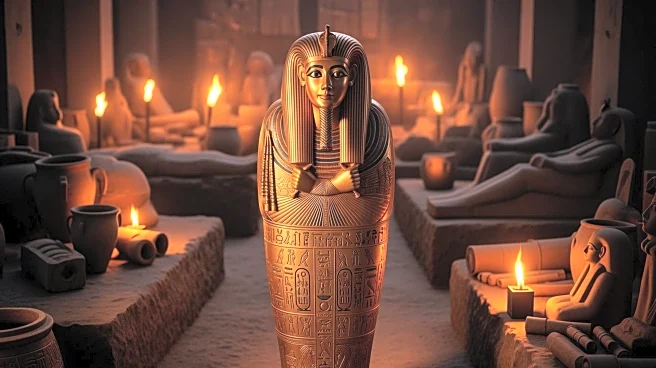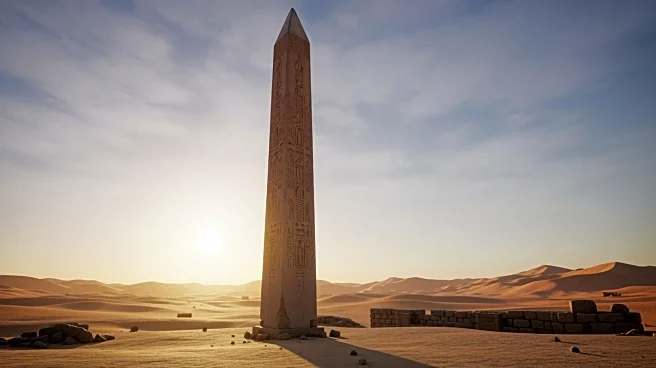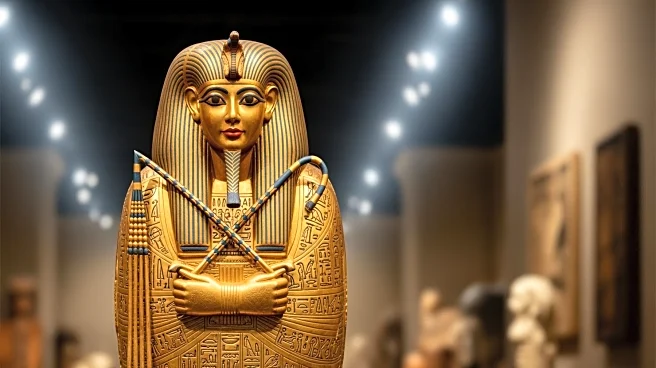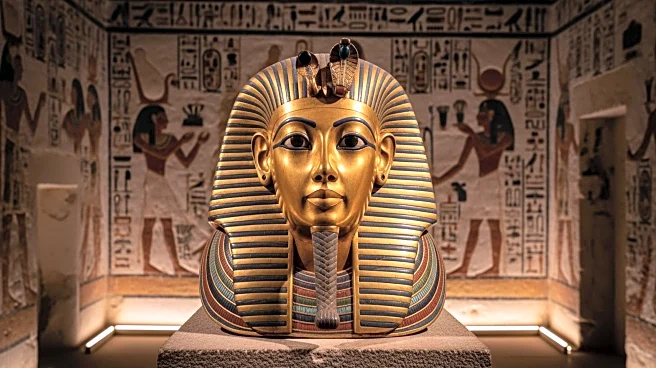What's Happening?
An Egyptian archaeological team has discovered three 3,000-year-old tombs in Luxor's Dra Abu el-Naga, revealing insights into the lives of New Kingdom officials. The tombs belonged to individuals associated with the cult of Amun, including Amun-em-Ipet,
Baki, and an official referred to as 'S.' These individuals held significant roles within the religious and administrative systems of ancient Egypt. The tombs contain inscriptions and scenes depicting funerary processions and banquets, offering a glimpse into the religious practices and daily operations of the state during the 18th Dynasty and Ramesside period.
Why It's Important?
The discovery sheds light on the roles of non-royal elites in ancient Egypt, highlighting their influence in religious, economic, and political structures. The tombs provide valuable information about the distribution of power and labor among non-royal officials, contributing to the understanding of Egypt's bureaucracy and the stability of its institutions. The findings will enhance historical knowledge and contribute to future displays at the Grand Egyptian Museum, offering a broader perspective on Egyptian history beyond the royal narrative.
What's Next?
The excavation will be followed by a thorough documentation process, including mapping paint layers, translating inscriptions, and stabilizing damaged areas for conservation. A full scientific report will detail the tombs' contents, layout, and historical implications. Comparisons with older tombs in the same necropolis are underway to understand patterns of reuse and structural modifications over centuries.













